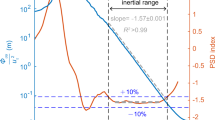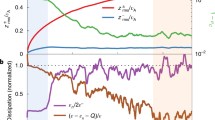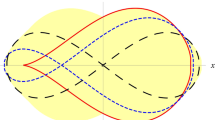Abstract
IT is hardly possible to imagine that the first experimenter who obtained an electric spark sufficiently strong to produce a sensible sound should not at once have been struck by the fact that he was in the presence of thunder and lightning on a small scale. We find, indeed, in various writings from the early days of electrical machines a number of suggestions that the thunderstorm is an electrical phenomenon; but to Benjamin Franklin belongs the merit of having perceived that a direct experiment was needed to prove what so far was only a guess. In an article entitled “Opinions and Conjectures concerning the Properties and Effects of the Electrical Matter arising from Experiments and Observations made at Philadelphia, 1749,” the following passage occurs:—
This is a preview of subscription content, access via your institution
Access options
Subscribe to this journal
Receive 51 print issues and online access
$199.00 per year
only $3.90 per issue
Buy this article
- Purchase on Springer Link
- Instant access to full article PDF
Prices may be subject to local taxes which are calculated during checkout
Similar content being viewed by others
References
"Experiments and Observations on Electricity made at Philadelphia, in America," by Benjamin Franklin, LL.D. and F.R.S. (London, printed for David and Henry, and sold by Francis Newbery, 1769, p. 66.)
Ibid., p. 107
The most complete investigation of the conduction of gases rising from flames is contained in a series of papers by Giese (Wiedemann's Annalen vol. xvii.).
"Veroffentl. des Kgl. Preuss. Stat. Bureaus," 1886, p. 177, quoted by Bebber, "Meteorologie," p. 245.
Weber, Elektrotechnische Zeitschrift, vol. x.; Elster and Geitel, "Ueber einige Ziele und Methoden Luftelektrischer Untersuchungen," Wolfenbüttel, 1891.
Bebber, "Meteorologie," p. 255; Bornstein, Archiv der Seewart, viii., 1885.
Arch. des Sci. Phys. et Nat. (3) Vol. xxi., 1889. The above account is translated from the Meteorologische Zeitschrift, 1889
"Die Gemeinschaftliche Ursache der Elektrischen Meteore und des Hagels," H. W. Schmidt, Halle-a.-S.
Paulsen, "Danske Videnskab. Selskabs Forhand.," 1889. (I have not seen the original memoir, but only an abstract in the Jahrbuch der Astronomie und Geophysik, 1890.)
Rights and permissions
About this article
Cite this article
Atmospheric Electricity.1. Nature 53, 207–212 (1896). https://doi.org/10.1038/053207a0
Issue Date:
DOI: https://doi.org/10.1038/053207a0
Comments
By submitting a comment you agree to abide by our Terms and Community Guidelines. If you find something abusive or that does not comply with our terms or guidelines please flag it as inappropriate.



